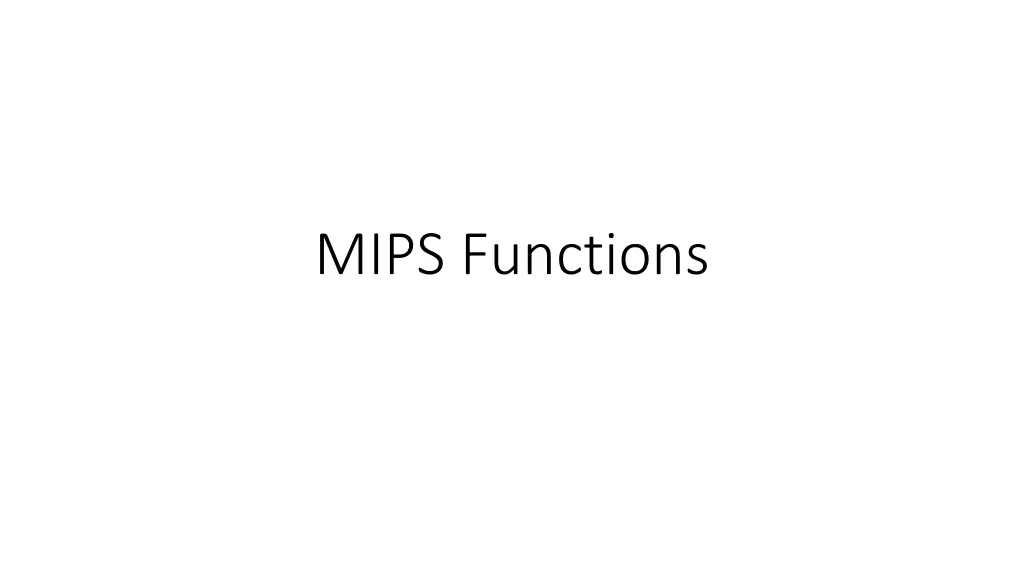
Understanding MIPS Functions and String Operations
Learn about MIPS functions, character encoding, string operations, and SPIM syscalls. Explore concepts such as moving bytes, copying strings, and utilizing the stack in MIPS programming.
Download Presentation

Please find below an Image/Link to download the presentation.
The content on the website is provided AS IS for your information and personal use only. It may not be sold, licensed, or shared on other websites without obtaining consent from the author. If you encounter any issues during the download, it is possible that the publisher has removed the file from their server.
You are allowed to download the files provided on this website for personal or commercial use, subject to the condition that they are used lawfully. All files are the property of their respective owners.
The content on the website is provided AS IS for your information and personal use only. It may not be sold, licensed, or shared on other websites without obtaining consent from the author.
E N D
Presentation Transcript
Character and String Operations Characters are encoded as 0 s and 1 s using ASCII most commonly American Standard Code for Information Interchange Each character is represented using 8 bits (or a byte) MIPS provides instructions to move bytes Load byte (lb) loads a byte to the rightmost 8 bits of a register Store byte (sb) write the rightmost 8 bits of a register to memory 6/2/2025 week04-3.ppt 2
SPIM syscalls li $v0,1 li $a0,100 syscall # print an integer in $a0 li $v0,5 syscall # read an integer into $v0 li $v0,4 la $a0,msg_hello syscall # print an ASCIIZ string at $a0 li $v0,10 syscall #exit
String Copy Procedure 6/2/2025 week04-3.ppt 4
.data msg_hello: .asciiz "Hello\n msg_empty: .space 400 Main: .text .globl main li $v0,4 la $a0,msg_hello syscall li $v0,4 la $a0,msg_empty syscall la $a0,msg_empty #dst la $a1,msg_hello #src jal strcpy li $v0,4 la $a0,msg_empty syscall li $v0,10 #exit syscall strcpy: lb $t0, 0($a1) sb $t0, 0($a0) addi $a0, $a0, 1 addi $a1, $a1, 1 bne $t0, $0, strcpy jr $ra
Stack Key things to keep in mind: Stack is a software concept last in first out, that s it. In MIPS, you implement the stack by yourself by keeping $sp always pointing to the top element on the stack Stack can be used in functions to save register values, and is the standard approach to save register values. But You can also use stack for other purposes This is not the only way to save register values.
.data .asciiz "hello L1: L2: la $t1,msg lb $t0,0($sp) addi $sp,$sp,1 sb $t0,0($t1) beq $t0, $0, L3 addi $t1,$t1,1 j L2 msg: world" endl: .asciiz "\n" main: addi $sp,$sp,-1 sb $0,0($sp) la $t1, msg L0: lb $t0,0($t1) beq $t0,$0, L1 addi $sp,$sp,-1 sb $t0,0($sp) addi $t1,$t1,1 j L0 .text .globl main L3: la $a0,msg li $v0,4 syscall la $a0,endl li $v0,4 syscall li $v0,10 #exit syscall
